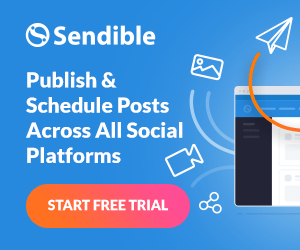There’s no doubt that a good website forms the backbone of marketing activity for many businesses. It cements the connection between the customer and a range of products and services, delivering the sort of engagement that keeps users coming back again and again.
Website development has been made easier over the years with intuitive interfaces and off-the-shelf solutions. Creating an optimised website, however, one that really works for your business is another thing altogether.
Here we look at the main components that make up an effective website, the components which together deliver everything your business needs.
Hosting Package and Website Design
It doesn’t matter how great your website looks on the screen, if you don’t have a great hosting package then it means nothing.
Your pages won’t load quickly enough, if at all, because of glitches with the server. Something like this causes immense frustration for customers. Pick a host that has a proven track record and responsive support and a server that is mostly working at optimal performance.
You will also have to decide between an off-the-shelf web design or a bespoke one. While the former is relatively cheap, designs can be swamped with unnecessary code which makes its performance less than perfect.
While more expensive, a bespoke website design should be a perfectly optimised fit for your business. The underlying code will be clean and functional.
Search Engine Optimisation
SEO or search engine optimisation is a complicated business. In short, it’s the content of your pages that influence where you sit on the rankings of platforms like Google. Simple SEO is about including the right keywords in your content.
But it’s more than that. For example:
- Inbound links to your site from reliable or high ranking websites are important and developing a strategy to nurture this with great content is essential.
- The download speed of your site can also be a ranking factor as can having SSL certificates for encryption to protect visitors.
UX and Your Website
UX has become an increasingly important part of website development. It stands for the user experience. It’s how customers think and feel when they start using your website. For example, are they getting frustrated because they can’t find what they are looking for? Is the print too small for them to read?
UX looks to optimise the assets on your website so that visitors can easily get from A to B. Clear navigation, easy to read fonts, quick download, as well as a great visual design, are all important aspects of UX.
Even complicated ecommerce sites with a lot of products require an information architecture that works for the user.
Businesses often take website UX for granted without making an in-depth study of how it works for their customers. Changing just a few things here and there concerning usability can have a huge impact on performance.
The Importance of Featured Images
Did you know that blog posts with images get 94% more views than those that don’t? We are visual animals and featured images are an important component of website design. We’ve all heard the phrase ‘a picture paints a thousand words’.
Featured images on your site attract the visitor's attention and get them interested in the rest of your content. They’re a bit like the cover of a book so some thought needs to go into them. The image needs to be attractive, high quality and be relevant to the content that you are presenting.
Great Content is Crucial
Talk to any marketer and you’ll probably, at some point, hear the phrase ‘content is king’. Content isn’t just the written text on your website – it’s the images, videos, infographics and case studies, in fact, everything that the visitor sees when they hit your pages for the first time.
Good websites have good copy. Each time you create something for your site, you need to ask fundamental questions.
- Why is this important to my visitor?
- What does it achieve?
- Does it work?
One mistake that many inexperienced website owners make is adding in content for the sake of filling up a page. Because there is unlimited space there’s also the tendency to throw in as much content as possible. It’s quality, not quantity that matters.
Here are just a few factors you need to keep in mind:
- Great content gets to the point and builds a narrative for the visitor.
- Great content is actionable. In other words, it gets your customer to do something or feel something.
- Great content is original. One thing that search engines like Google don’t like is duplicate web pages.
- As well as a featured image, your content should have a strong, eye-catching headline.
- Visitors to your website are generally looking for something. Does your content answer the questions they have or solve their problem?
Create engaging content and build your reputation and customers will come back to you again and again. It takes work, but it is certainly worth it.
Mobile Ready Website and What it Means
Mobile ready should perhaps be at the top of this list. Most of us nowadays access the internet not on a desktop or even a laptop but a smartphone or tablet. The different size of the screens means that page design is important.
What displays perfectly on a large desktop screen won’t look so great or be easy to read on a smartphone. Good websites are mobile-ready which means that users can easily navigate and view your pages while on the move with their smartphone.
If you are creating a website for your business and you want it to be as effective as possible, it’s crucial to include these components in your design. Get it right and your customers will enjoy using your website and, more importantly, keep coming back for more.


